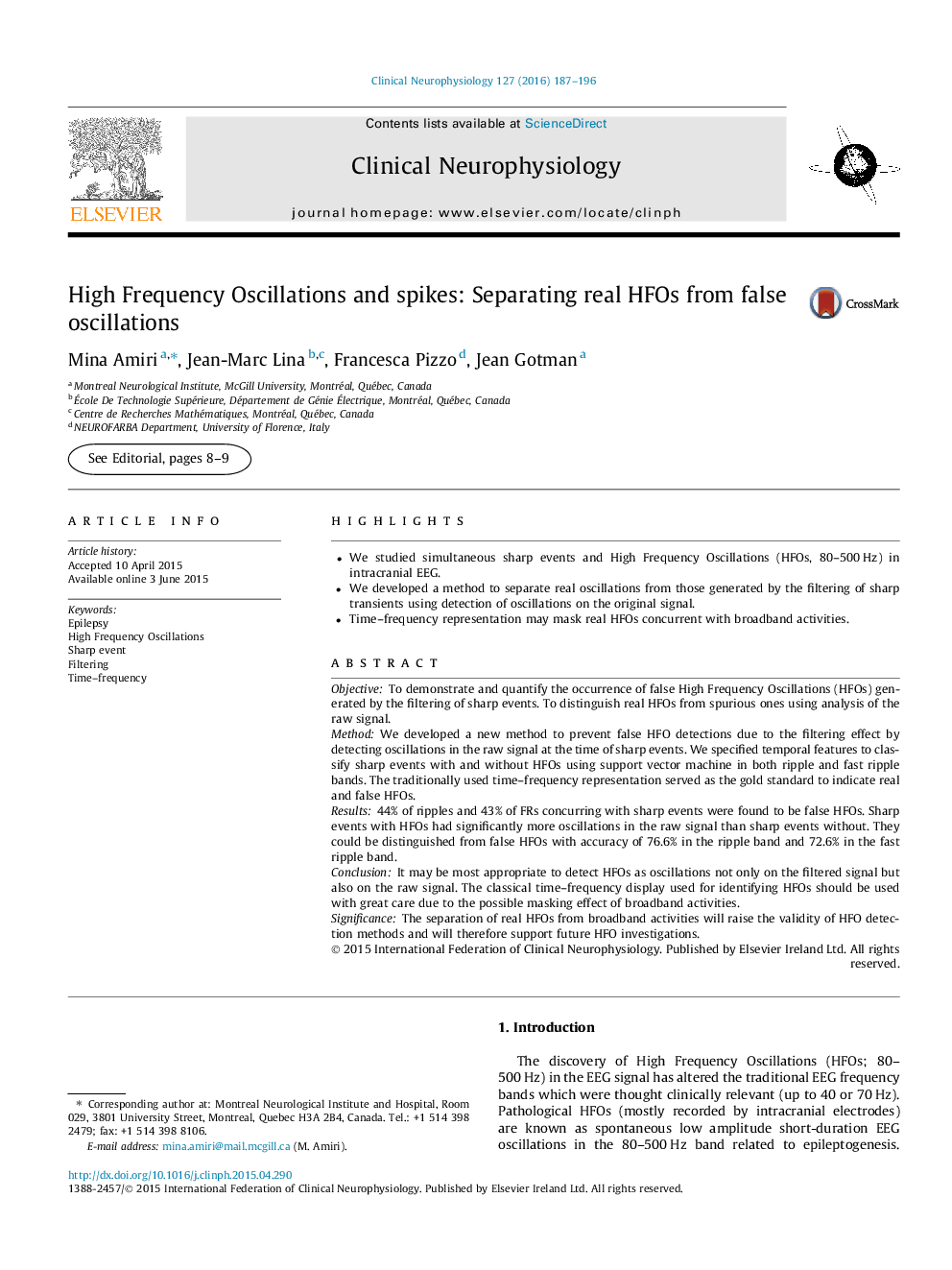| Article ID | Journal | Published Year | Pages | File Type |
|---|---|---|---|---|
| 6007852 | Clinical Neurophysiology | 2016 | 10 Pages |
â¢We studied simultaneous sharp events and High Frequency Oscillations (HFOs, 80-500 Hz) in intracranial EEG.â¢We developed a method to separate real oscillations from those generated by the filtering of sharp transients using detection of oscillations on the original signal.â¢Time-frequency representation may mask real HFOs concurrent with broadband activities.
ObjectiveTo demonstrate and quantify the occurrence of false High Frequency Oscillations (HFOs) generated by the filtering of sharp events. To distinguish real HFOs from spurious ones using analysis of the raw signal.MethodWe developed a new method to prevent false HFO detections due to the filtering effect by detecting oscillations in the raw signal at the time of sharp events. We specified temporal features to classify sharp events with and without HFOs using support vector machine in both ripple and fast ripple bands. The traditionally used time-frequency representation served as the gold standard to indicate real and false HFOs.Results44% of ripples and 43% of FRs concurring with sharp events were found to be false HFOs. Sharp events with HFOs had significantly more oscillations in the raw signal than sharp events without. They could be distinguished from false HFOs with accuracy of 76.6% in the ripple band and 72.6% in the fast ripple band.ConclusionIt may be most appropriate to detect HFOs as oscillations not only on the filtered signal but also on the raw signal. The classical time-frequency display used for identifying HFOs should be used with great care due to the possible masking effect of broadband activities.SignificanceThe separation of real HFOs from broadband activities will raise the validity of HFO detection methods and will therefore support future HFO investigations.
